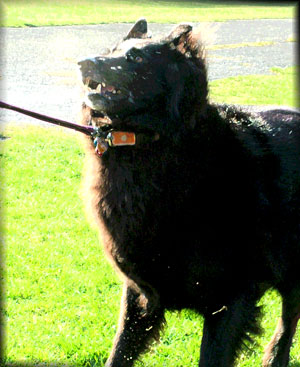“No!”
 Saying "No" probably won't help control
Saying "No" probably won't help control pulling on leash.
It's a word we use far too often, especially when we are working with our dogs. And we use it to mean so many things. "No", don't dig in the garbage, “No”, don’t pull, "No", don’t jump on people; it is a word we repeat over and over to our dogs.
What purpose does the word no serve in dogs training and why do we keep saying it?
The hope is that telling the dog "no" will help stop the behavior in the future. That puts the word "no" firmly in the positive punishment quadrant of operant conditioning, an added consequence that decreases the frequency of a behavior. The problem is that unless the word is accompanied by or has been associated with a physical correction, it probably will not decrease the frequency of future behavior. In that case, it is little more than nagging and can become meaningless.
Even worse, the word “no” does not tell a dog what to do. It is not a clear direction. “No” leaves far too many options available for other undesirable behaviors.
Rather than repeating the word “no” over and over, a better option is to teach a dog what we want him to do and then ask for it. Find and behavior that is incompatible with the undesirable behavior and train the dog to do it on cue.
If your dog is digging in the trash, teach your dog that “Leave it” means “ignore what you are looking at and come to me”. If your dog pulls, teach your dog to walk nicely on a leash. A dog that has learned to sit for greetings will not be as tempted to jump for attention.
So the next time you are tempted to say “no”, take a second and think about what you would like your dog to do instead, then teach your dog to do it.
Click here to go to the training tips page.
No



